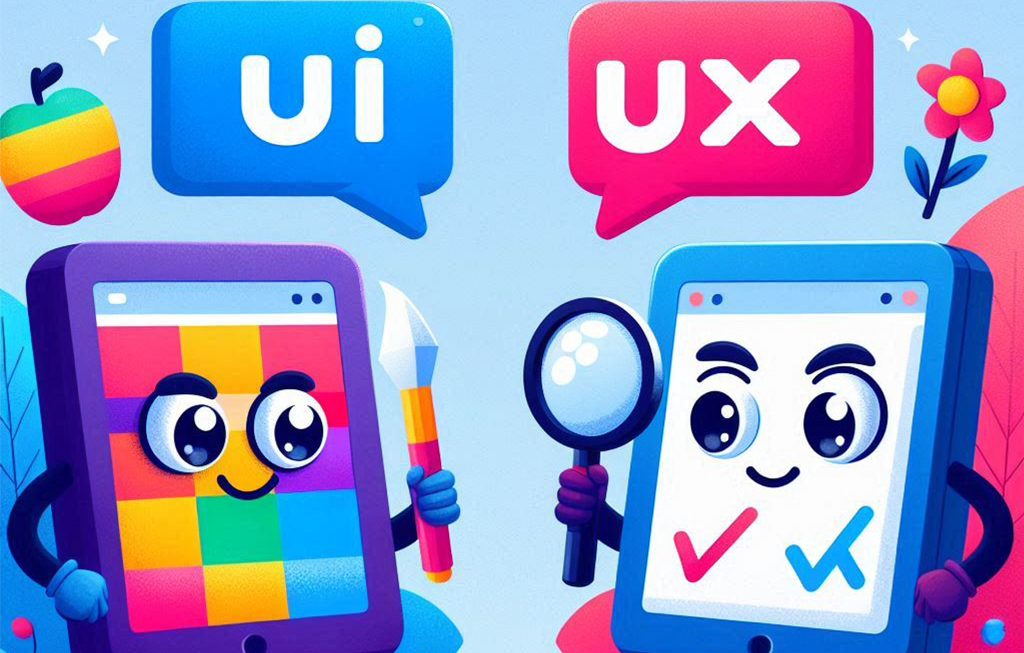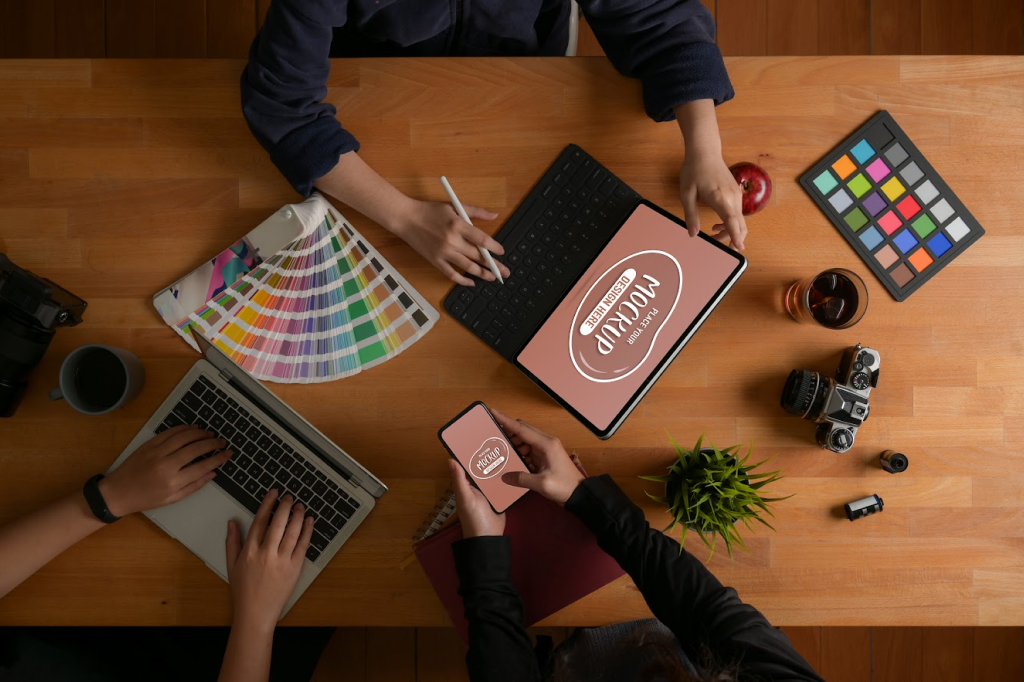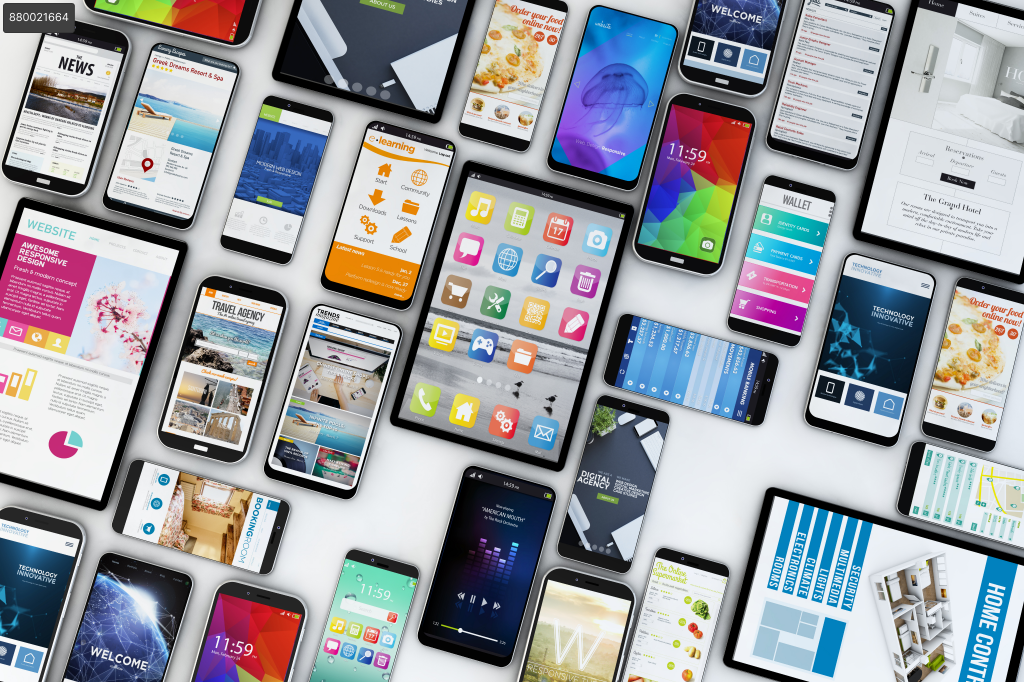
En moltes ocasions les empreses busquen contractar enginyers UI/UX i molts professionals diuen en els seus currículums que són enginyers UI/UX, sovint sense conèixer completament què significa això. UI i UX són dos mons diferents, encara que eventualment es creuen.
UI (Interfície d’Usuari) es refereix a la part visual i estètica d’un producte digital. Inclou tots els elements amb els quals un usuari pot interactuar: botons, icones, menús, tipografia, colors i qualsevol component visual. A més, la UI també abasta la codificació de la interfície, assegurant que tots els elements visuals siguin funcionals i accessibles. L’objectiu principal de la UI és crear una interfície atractiva i coherent que faciliti i enriqueixi l’experiència visual de l’usuari.
UX (Experiència d’Usuari) abasta tots els aspectes de la interacció d’un usuari amb un producte o servei. Això inclou no només la interfície, sinó també la percepció general de l’usuari sobre l’ús del producte, des de la facilitat d’ús fins a la satisfacció emocional i l’eficiència en complir els seus objectius. El UX es centra en millorar la usabilitat i la interacció total de l’usuari, assegurant que el producte sigui útil, accessible i agradable de fer servir.
Rols i Tasques d’un enginyer UI
Els professionals de UI, també coneguts com a dissenyadors d’interfícies, tenen un enfocament específic en la part visual i estètica del producte digital. Els seus rols i tasques inclouen:
Disseny visual: Els dissenyadors d’UI són responsables de crear l’aparença visual del producte digital. Això implica seleccionar paletes de colors, tipografies i estils gràfics que representin la identitat visual del producte. A més, han d’assegurar-se que tots els elements visuals estiguin en harmonia i siguin estèticament agradables per als usuaris.
Prototipat: Els dissenyadors d’UI desenvolupen prototips visuals d’alta fidelitat que representen com es veurà i funcionarà la interfície de l’usuari final. Utilitzen eines de disseny avançades com Sketch, Figma o Adobe XD per crear aquests prototips, la qual cosa ajuda a visualitzar i comunicar les idees de disseny de manera efectiva dins de l’equip de desenvolupament.
Codificació de la interfície: Els dissenyadors d’UI són competents en la codificació avançada d’interfícies. Això inclou la maquetació precisa utilitzant HTML i la creació d’estils amb CSS per assegurar que els dissenys s’implementin de manera fidel i efectiva. Utilitzen frameworks moderns com Bootstrap o Materialize, així com plantilles optimitzades, per agilitzar el procés de desenvolupament. A més, tenen experiència en assegurar que la interfície sigui responsive, adaptant-se de manera fluida a diferents mides de pantalla i dispositius.
Estàndards de disseny: Els dissenyadors d’UI estableixen i mantenen els estàndards de disseny per assegurar la coherència visual en tot el producte digital. Això inclou la documentació de directrius de disseny, components reutilitzables i sistemes de disseny que facilitin el treball de l’equip de desenvolupament i l’expansió del producte.
Disseny mòbil: Alguns dissenyadors d’UI també tenen experiència en disseny mòbil, assegurant que la interfície estigui optimitzada específicament per a dispositius mòbils. Això inclou consideracions com la navegació tàctil, l’ús d’icones i botons més grans, i l’adaptació a pantalles més petites.
Rols i Tasques d’un enginyer UX
Els professionals de UX, també coneguts com a dissenyadors d’experiència d’usuari, es centren en la creació d’experiències interactives que siguin intuïtives, efectives i satisfactòries per als usuaris. Els seus rols i tasques inclouen:
Investigació d’usuaris: Realitzen estudis de mercat, entrevistes amb usuaris i anàlisi de dades per comprendre les necessitats, comportaments i expectatives dels usuaris. Aquesta investigació guia el disseny de productes que resolen problemes reals i satisfan les necessitats de l’usuari.
Arquitectura de la informació: Organitzen i estructuren el contingut del producte per assegurar que sigui fàcil d’entendre i navegar. Això inclou la creació de mapes de lloc, diagrames de flux i taxonomies que defineixen l’estructura i la relació entre els diferents elements del producte.
Disseny d’interacció: Defineixen com els usuaris interactuaran amb el producte. Creen wireframes i prototips de baixa i alta fidelitat per representar visualment el flux d’interacció i la funcionalitat del producte, assegurant que l’experiència sigui fluida i eficient per a l’usuari.
Proves de usabilitat: Realitzen proves amb usuaris per avaluar l’efectivitat del disseny i la facilitat d’ús del producte. Recullen feedback i dades qualitatives per identificar problemes de usabilitat i àrees de millora, i després ajusten el disseny en funció d’aquests descobriments.
Disseny de contingut: Asseguren que el contingut del producte sigui rellevant, útil i coherent amb els objectius de l’usuari i del negoci. Col·laboren amb redactors i especialistes en contingut per desenvolupar una estratègia de contingut que doni suport a l’experiència de l’usuari.
Optimització contínua: Monitoren i analitzen mètriques d’ús i comportament dels usuaris per identificar oportunitats de millora contínua. Implementen canvis iteratius en el disseny basats en dades i feedback per optimitzar l’experiència de l’usuari amb el temps.
La realitat de UI/UX a Espanya
A Espanya, la majoria dels dissenyadors i maquetadors que s’etiqueten com a enginyers UI/UX no realitzen les tasques pròpies d’un enginyer de UX i freqüentment manquen del coneixement necessari per dur-les a terme. A més, moltes empreses espanyoles no assignen pressupost específic per a UX. Algunes subcontracten agències de disseny, mentre que altres utilitzen els seus propis dissenyadors, però primordialment es centren en l’estètica de l’aplicació més que en millorar la seva usabilitat.
Els processos de UX són costosos; tant la investigació com les proves requereixen usuaris externs, freqüentment no familiaritzats amb l’aplicació, i en ocasions se’ls remunera per participar en aquestes proves. A causa del desconeixement d’aquests processos i la falta de pressupost, moltes empreses no inverteixen adequadament en UX, confiant que els seus dissenyadors, basats en la seva experiència personal, poden crear una interfície que consideren usable.
Sovint, les empreses opten per plantilles predissenyades que ofereixen una aparença atractiva i una usabilitat acceptable, però no sempre adaptada a les necessitats específiques de l’aplicació desenvolupada. Un exemple d’això és la tendència de fer aplicacions responsives, intentant omplir tot l’espai de la pantalla. Però aquesta pràctica pot portar a errors. Per exemple, en xarxes socials com LinkedIn i Facebook, el disseny s’ajusta automàticament deixant marges als costats (boxeo), en lloc d’augmentar els panells conforme la pantalla s’eixampla.
Aquest enfocament té sentit, ja que el text és més llegible i permet una lectura més fàcil en amplades de pantalla moderades. Un dissenyador pot intuir aquest detall gràcies a la seva experiència, però un enginyer de UX, en realitzar proves amb usuaris, obtindria feedback directe sobre la llegibilitat del text en diferents configuracions de pantalla, cosa que guiaria ajustos més precisos per millorar l’experiència de l’usuari.





